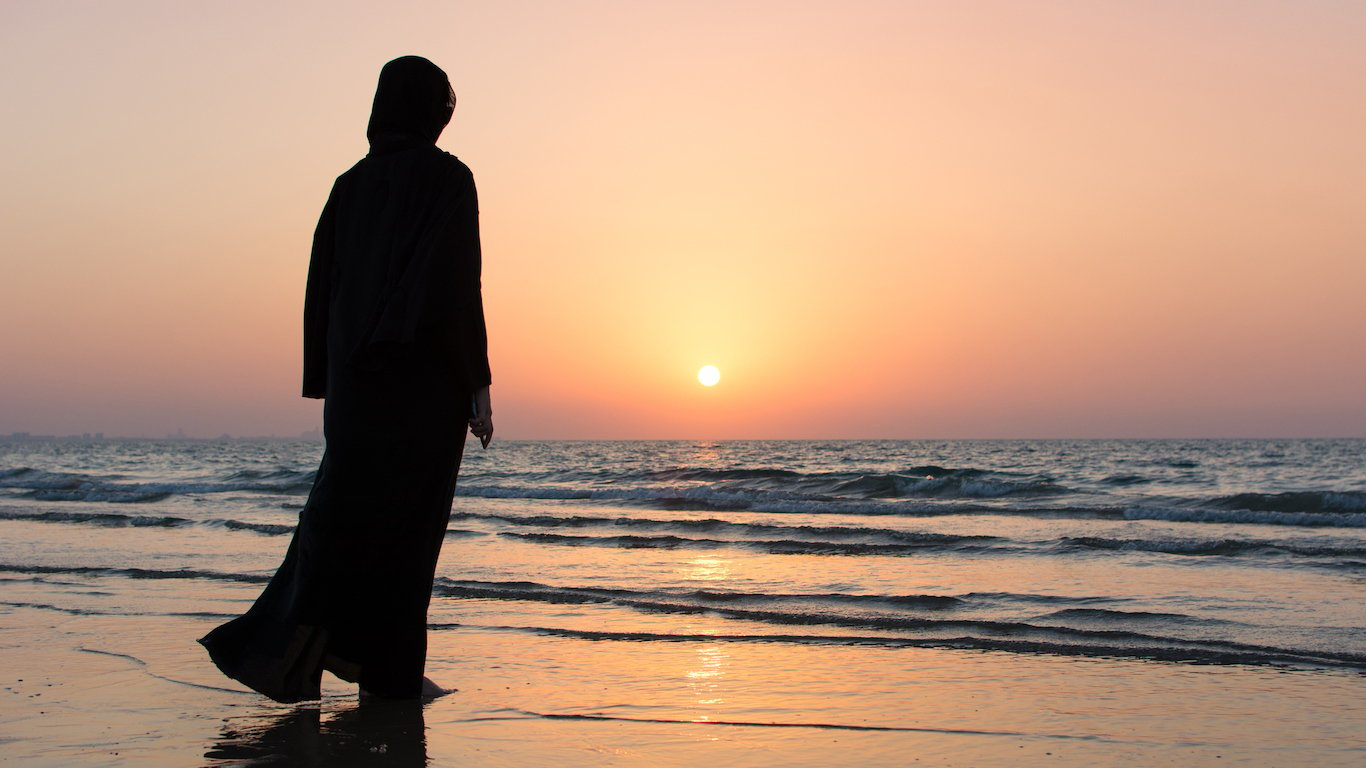

Humanity has made significant progress in nearly every measure of well-being, and people today live better than at any time in history. Progress, though, has not been equal across continents and regions, nor along racial and especially gender lines. In many places in the world, women live in fear for their lives and are treated as little more than chattel.
Customs, traditions and cultural attitudes die hard in places that subject women to sexual violence, prevent them from accessing proper health care, keep them from owning property, and deny them educational opportunities.
To monitor the risks women all over the world face, Thomson Reuters Foundation conducted a poll earlier this year to highlight the most dangerous countries for women. Thomson Reuters surveyed 548 experts in women’s issues on issues ranging from sexual violence to discrimination to determine its results. 24/7 Wall St. used the basis of these findings to review the list of the most dangerous countries for women. We also obtained additional material from the United Nations Development Program, the World Bank, and the Global Slavery Index for our findings.
Click here to see the most dangerous countries for women.
Click here to read our detailed findings and methodology.
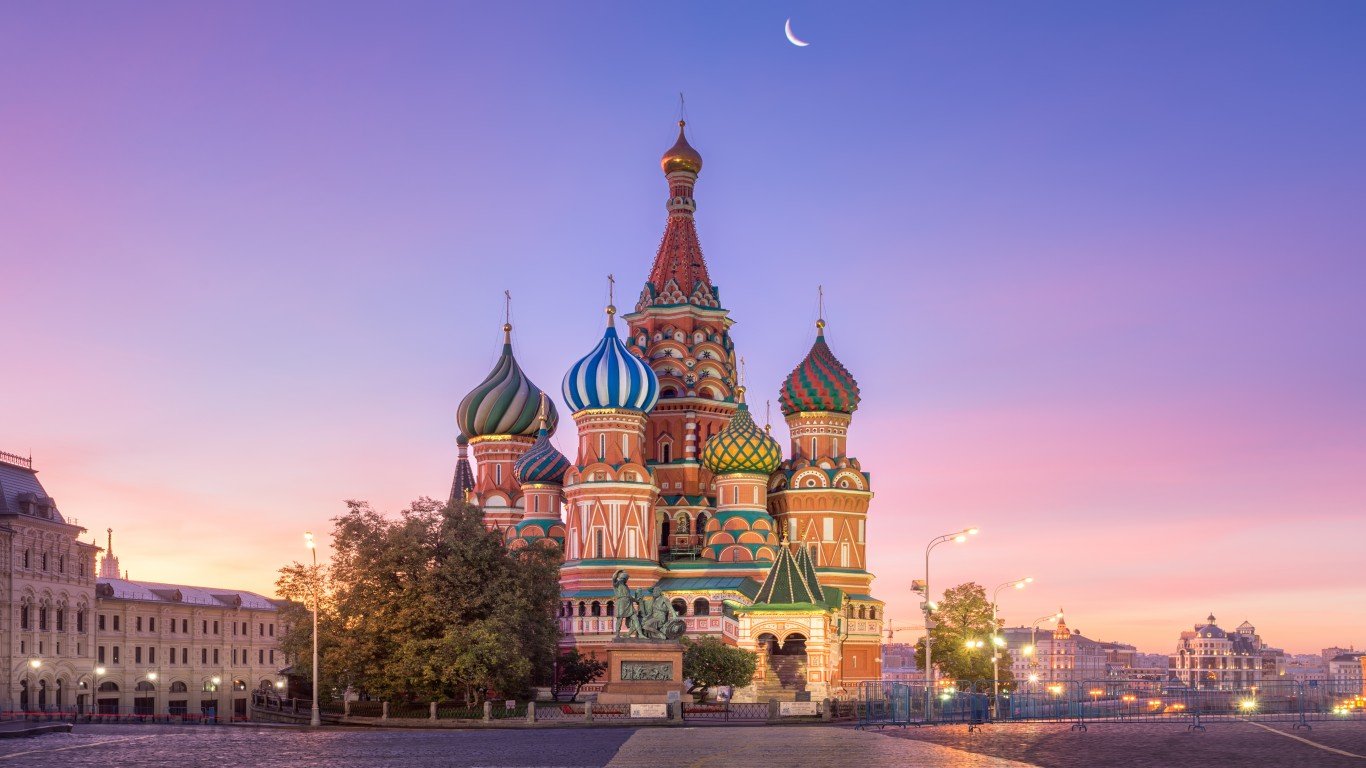
15. Russian Federation
> Est. trafficking victims: 5.5 per 1,000 residents
> Female life expectancy: 76.9 years
> Women in legislature: 16.1%
> Population: 144.5 million
The Thomson Reuters report on the most dangerous countries for women ranks Russia as the fourth worst country for human trafficking. While the Global Slavery Index estimates that approximately one in every 500 Russian residents lives in a forced labor or forced marriage situation, just 23 offenders were convicted of trafficking in 2013. According to the State Department, the Russian government has made minimal efforts to prevent trafficking. The government has no agency tasked with coordinating anti-trafficking measures, and legislation designed to create such an organization has been stalled. In recent years, Russian officials have been suspected of facilitating trafficking activity by providing protection to traffickers and accepting bribes to not prosecute exploiters who have having illegal workers.
[in-text-ad]
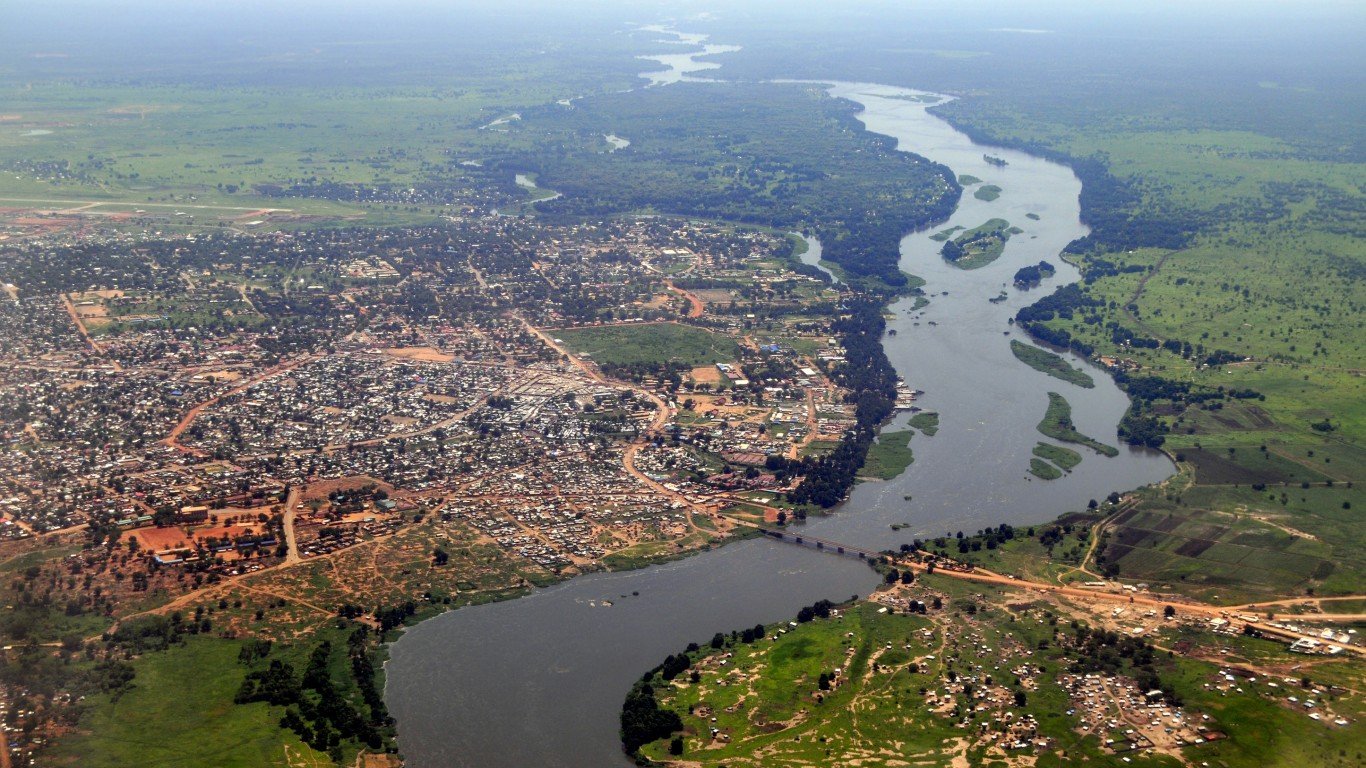
14. South Sudan
> Est. trafficking victims: 20.5 per 1,000 residents
> Female life expectancy: 57.8 years
> Women in legislature: 26.6%
> Population: 12.6 million
South Sudan is one of the youngest nations, gaining independence from Sudan in 2011, and for most of that time, it has been ravaged by armed conflict. The war-torn country ranks sixth in women’s access to health care and ninth in discrimination of women.
The life expectancy of women in the African nation is 58 years, according to the World Bank, among the lowest in the world. South Sudan is tied for 181st with Mozambique out of 188 countries on the the United Nations Development Program Gender Inequality Index.

13. Myanmar
> Est. trafficking victims: 11.0 per 1,000 residents
> Female life expectancy: 68.9 years
> Women in legislature: 10.2%
> Population: 53.4 million
The Thomson Reuters report on the most dangerous countries for women ranks Myanmar as the third worst country for human trafficking. While most trafficking goes unreported, in 2017 Myanmar reported 225 human trafficking cases involving 242 female victims, a substantial increase from 2016. Approximately half of the cases involved women who were forced into marriages with foreign men. The rise in reported trafficking activity may be partially due to the increase in the violent conflict against Muslim Rohingyas in the northern part of the country. In what the UN has condemned as a “textbook example of ethnic cleansing,” an army operation against alleged terrorists in Rakhine State has displaced more than half a million Muslim Rohingyas, placing hundreds of thousands of women at risk of trafficking.
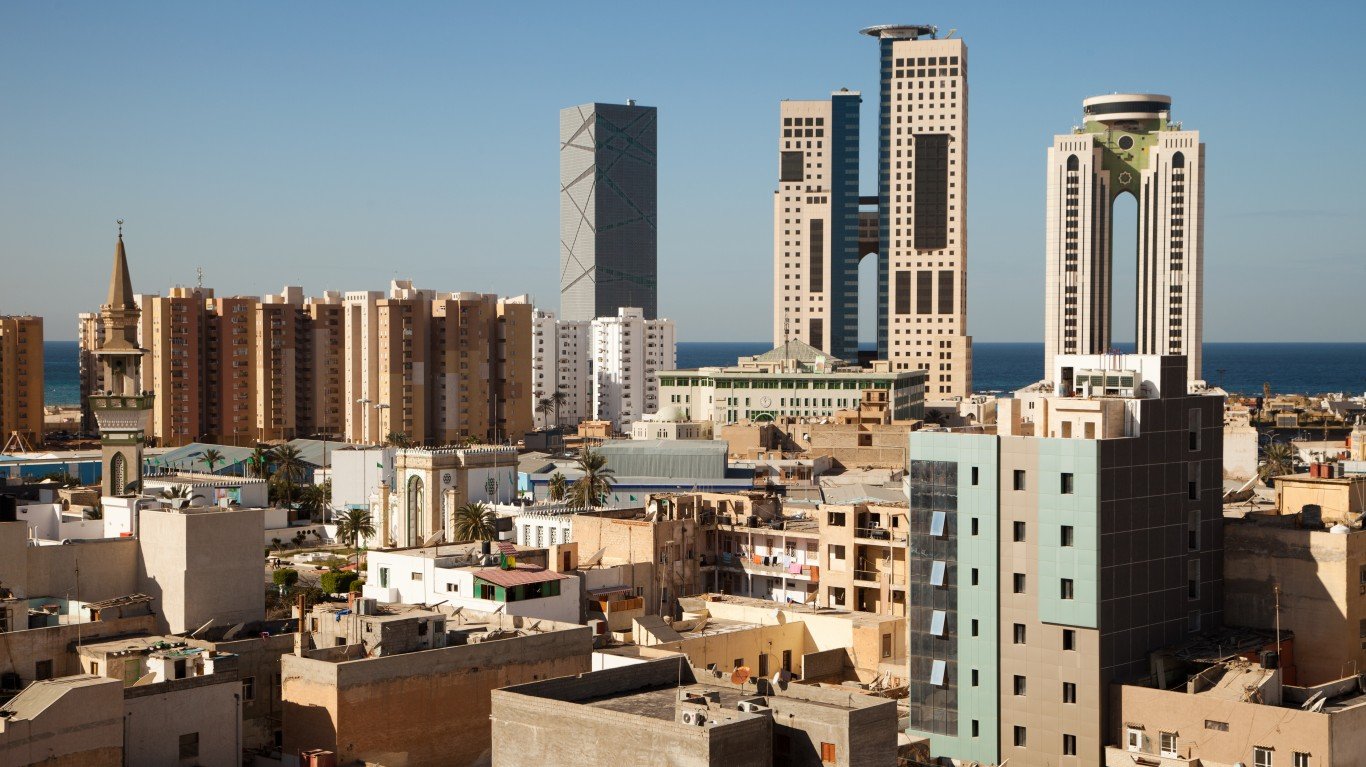
12. Libya
> Est. trafficking victims: 7.7 per 1,000 residents
> Female life expectancy: 74.9 years
> Women in legislature: 16.0%
> Population: 6.4 million
The despotic Muammar Gaddafi may be gone as leader of the North African nation, but the situation for women there remains challenging. Though Libya did not crack the top 10 in five of the categories polled by Thomson Reuters, it ranks second in human trafficking. Worldwide, women and girls account for 71% of human trafficking victims, with girls representing nearly three out of every four child trafficking victims. Human trafficking includes domestic servitude, forced marriage, and sexual slavery. The UN recently imposed sanctions on leaders in the country who took advantage of political instability to traffic migrants into Europe. Libya also ranks 102nd out of 188 countries on the United Nations Development Program Gender Inequality Index.
[in-text-ad-2]

11. Congo
> Est. trafficking victims: 8.0 per 1,000 residents
> Female life expectancy: 66.3 years
> Women in legislature: 14.0%
> Population: 5 million
The Congo is one of many African nations in which poverty, political instability, and the inferior social status of women contribute to a dangerous environment for women. According to a panel of 548 experts on women’s issues, the nation is the 11th most dangerous country for women. It ranks as the eighth worse in access to health care and the fifth worse for sexual violence. In addition to violence, women also face a threat from harmful cultural practices. According to research by Brigham and Women’s Hospital in Boston, 5% of women in the Congo undergo female genital mutilation. The Congo also ranks ninth worst for harmful cultural practices.

10. United States
> Est. trafficking victims: 1.3 per 1,000 residents
> Female life expectancy: 81.2 years
> Women in legislature: 20.0%
> Population: 325.7 million
The United States is the lone Western nation to make the Thomson Reuters Foundation ranking. The United States is ranked 10th because of its third place rank in sexual violence — which includes rape, sexual harassment, and coercion into sex — and sixth place rank in non-sexual violence, such as domestic physical and mental abuse.
According to Thomson Reuters, the survey was taken after the #MeToo movement against sexual harassment exploded last October. Following the allegations that Hollywood movie titan Harvey Weinstein was sexually harassing women for decades, hundreds of women went public with accounts of powerful men of abusing their positions of power in media, politics, and entertainment.
[in-text-ad]
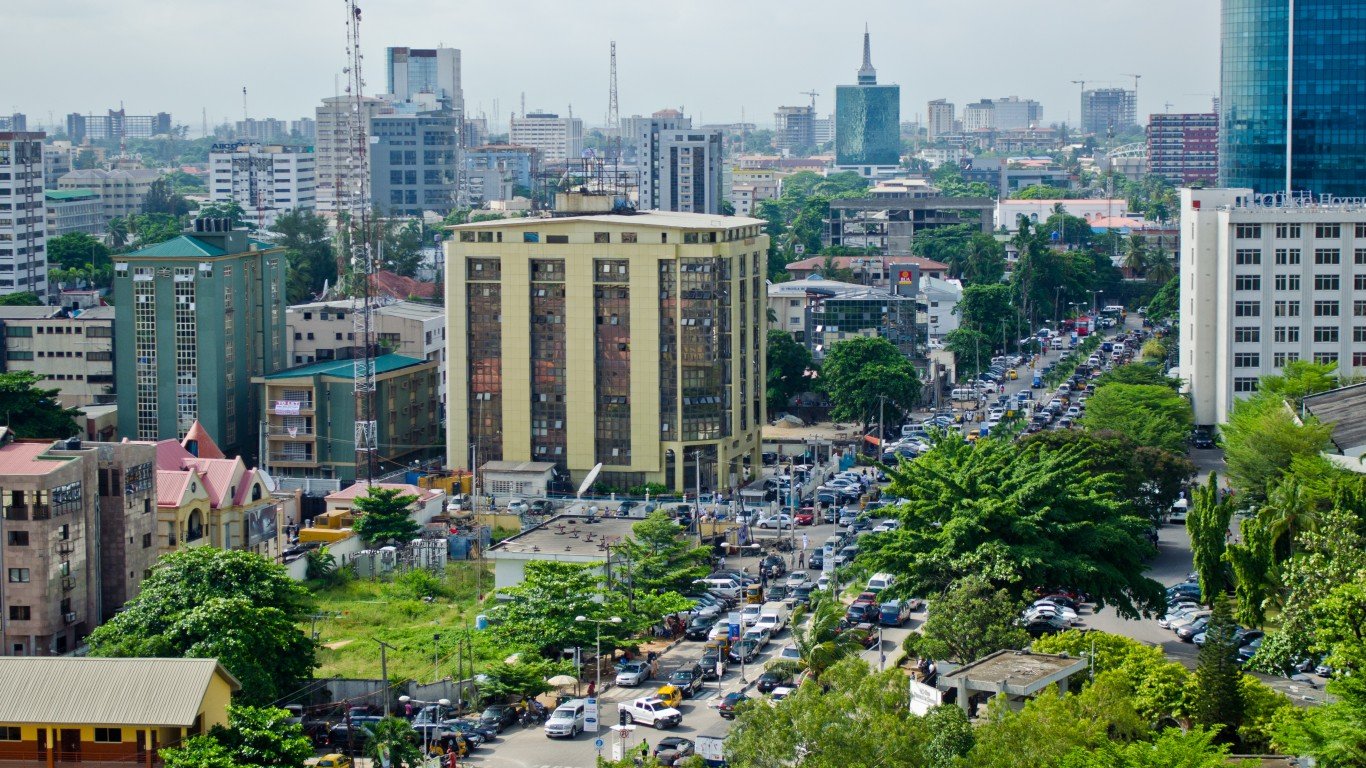
9. Nigeria
> Est. trafficking victims: 7.7 per 1,000 residents
> Female life expectancy: 54.2 years
> Women in legislature: 5.8%
> Population: 190.9 million
In Nigeria, extreme poverty, corruption, and violent conflict create one of the most hazardous environments for women in the world. Women in Nigeria are routinely subject to attacks from extremist groups such as Boko Haram, and they are more likely to be victims of human trafficking than in nearly any other country. According to the UN, 40% of street children are victims of trafficking.
In addition to the dangers of physical violence, there are certain cultural practices in Nigeria that pose a threat to women’s health. According to the Population Reference Bureau, 27% of women in Nigeria undergo female genital mutilation. The Thomson Reuters report on the most dangerous countries for women ranks Nigeria as the sixth worst country for cultural traditions harmful to women, the 10th worst for sexual violence, and the fourth worst for human trafficking.
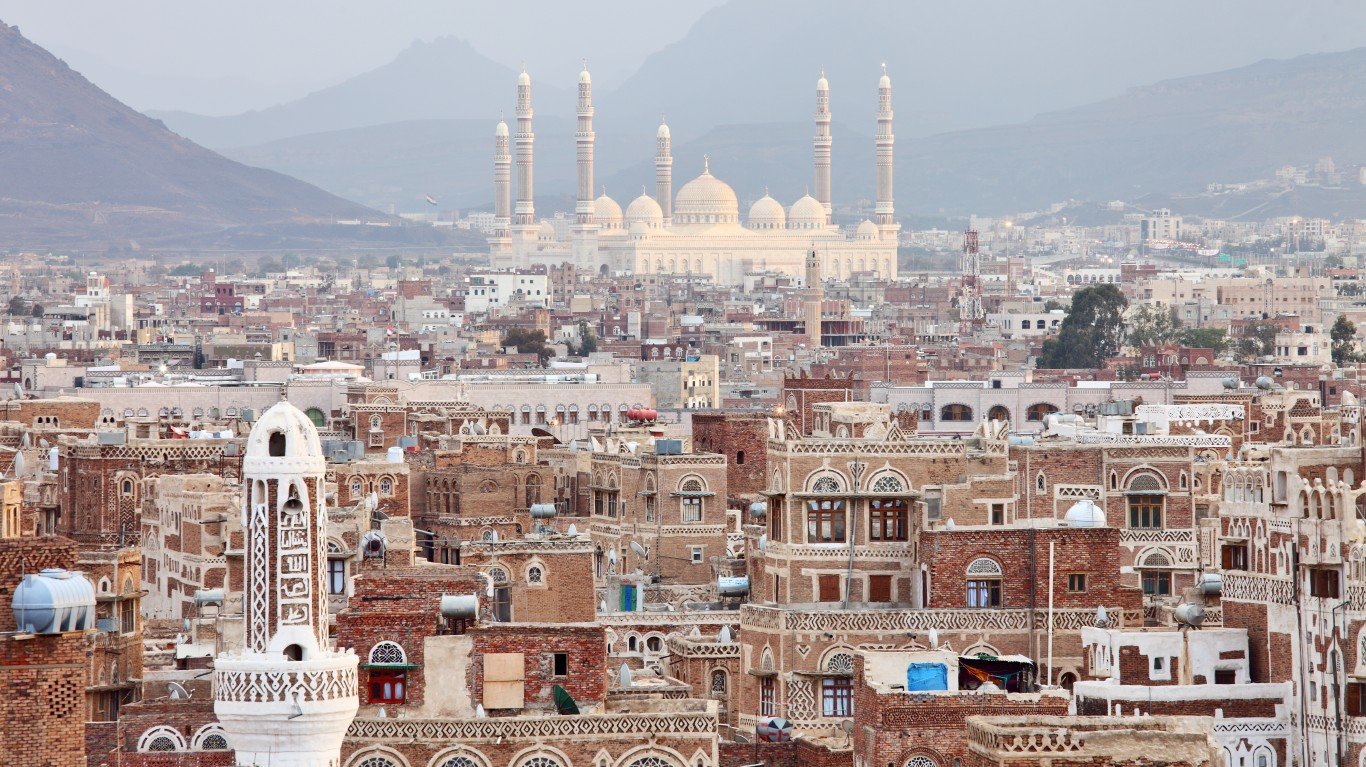
8. Yemen
> Est. trafficking victims: 3.1 per 1,000 residents
> Female life expectancy: 66.4 years
> Women in legislature: 0.5%
> Population: 28.3 million
Yemen has been torn apart by a proxy war between Saudi Arabia and Iran over the last three years, a war that has killed 10,000 people and displaced 3 million others. The unstable situation has made the nation on the Arabian peninsula dangerous — for women in particular.
Yemen ranks fourth in non-sexual violence such as mental and physical domestic abuse, fourth for access to health care, and fifth in discrimination of women. Women also can be subjected to acid attacks, child marriage, and genital mutilation. Yemen ranks 168th on the United Nations Development Program Gender Inequality Index.
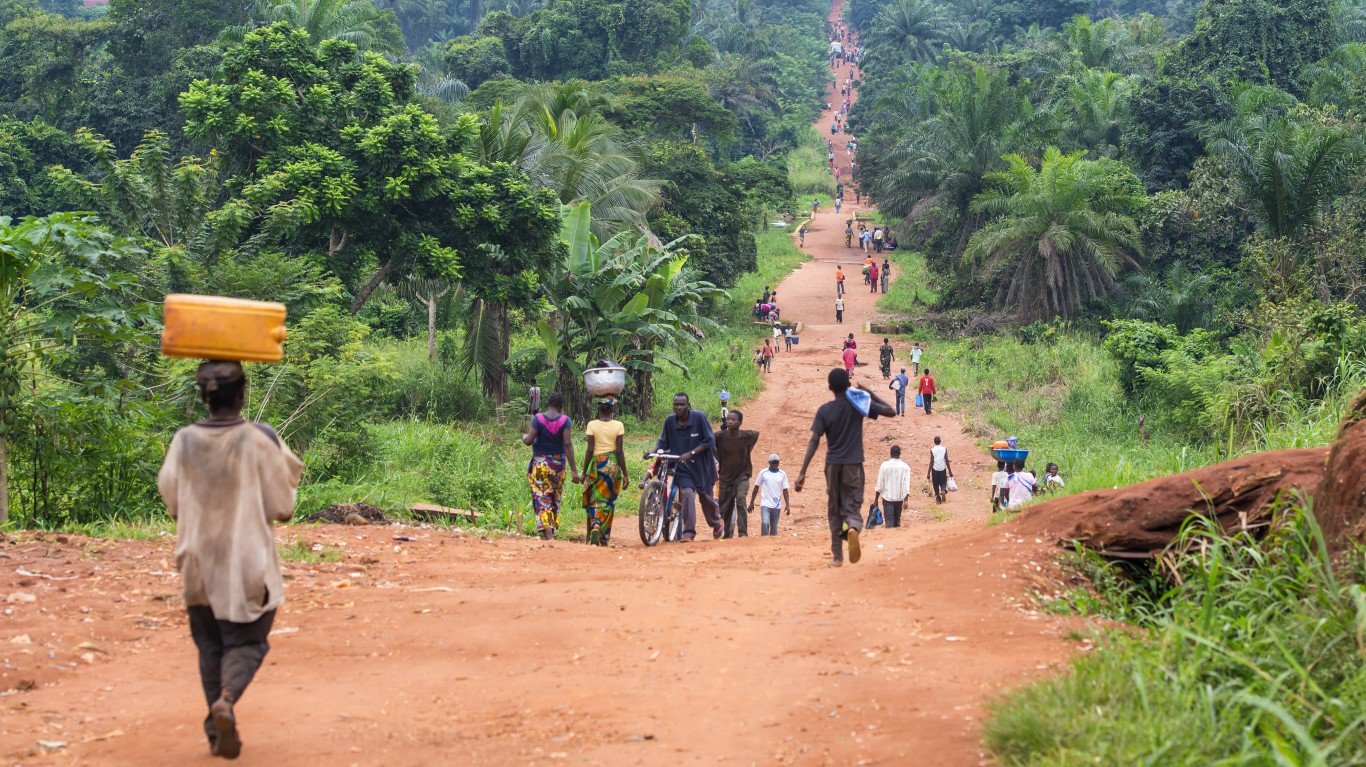
7. Democratic Republic of the Congo
> Est. trafficking victims: 13.7 per 1,000 residents
> Female life expectancy: 61.1 years
> Women in legislature: 8.2%
> Population: 81.3 million
Civil war in the Democratic Republic of Congo has led to widespread instability and suffering throughout the country and has left women with few civil protections. Armed groups on both sides of the conflict regularly loot and attack communities, and rape and kidnap women with impunity. According to the World Bank, 36.8% of adult women in the country are regularly subject to physical and sexual violence, the most of any country other than Afghanistan.
In addition to the dangers caused by the ongoing conflict, certain cultural practices in DR Congo pose a threat to women’s health. According to the World Health Organization, about 5% of women in the country undergo female genital mutilation. The Thomson Reuters report on the most dangerous countries for women ranks DR Congo as the second worst country for sexual violence.
[in-text-ad-2]
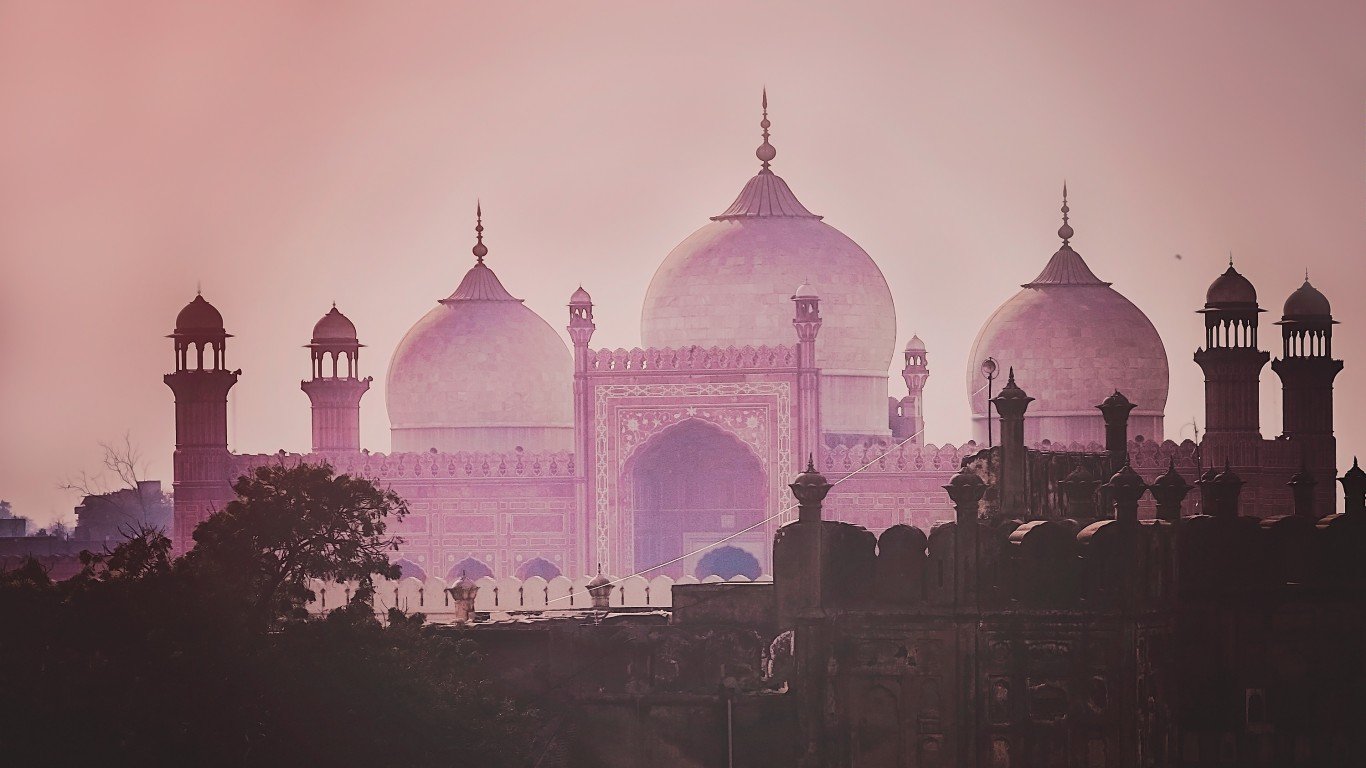
6. Pakistan
> Est. trafficking victims: 16.8 per 1,000 residents
> Female life expectancy: 67.5 years
> Women in legislature: 20.3%
> Population: 197.0 million
Pakistan improved from the previous Thomson Reuters report seven years ago, when it was ranked third most dangerous for women. Pakistan ranks fourth in the categories of discrimination and culture and religion, fifth in non-sexual violence, and seventh in sexual violence. According to data from the World Bank, one in three Pakistani women are physically abused by their husbands, and women are victims of honor killings at the hands of family members.
Violence against women in Pakistan was brought into sharp focus with the publication of the book “I Am Malala,” the story of Malala Yousafzai, the young woman who was shot by the Taliban because she was advocating for education for Pakistani women. Yousafzai received the Nobel Peace Prize, the youngest-ever Nobel Prize laureate.
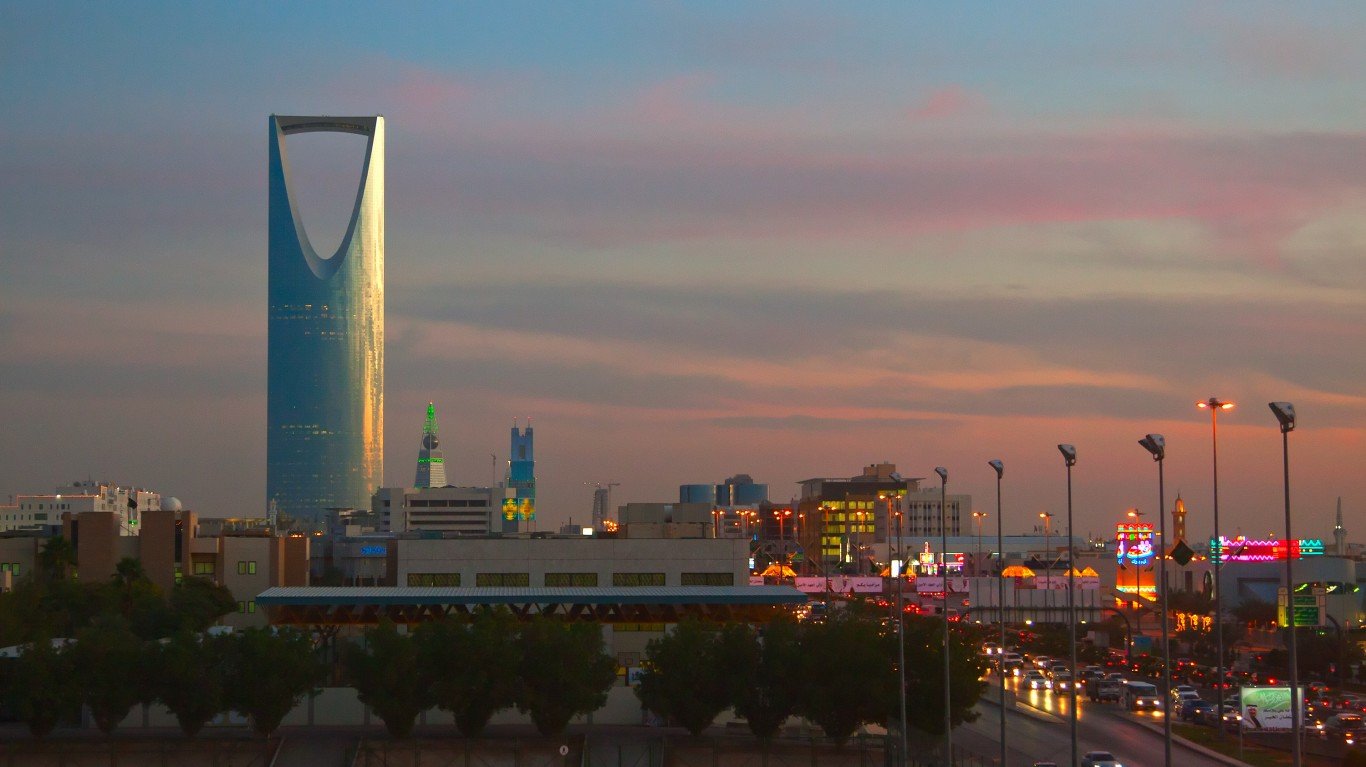
5. Saudi Arabia
> Est. trafficking victims: 1.9 per 1,000 residents
> Female life expectancy: 76.3 years
> Women in legislature: 19.9%
> Population: 32.9 million
Saudi Arabia has been criticized by experts on women’s issues for its enforcement of a strict interpretation of Sunni Islam that imposes harsh restrictions on women. Saudi Arabia currently has no female ministers and maintains a guardianship system through which women need the consent of a male relative for a variety of basic actions and needs, including for obtaining a passport, traveling abroad, where they live, and access to health care. While Saudi Arabia recently lifted its ban on women drivers, the Thomson Reuters report on the most dangerous countries for women still ranks the kingdom as the second worst country for discrimination against women and the fifth worst for cultural practices that hurt women.
[in-text-ad]
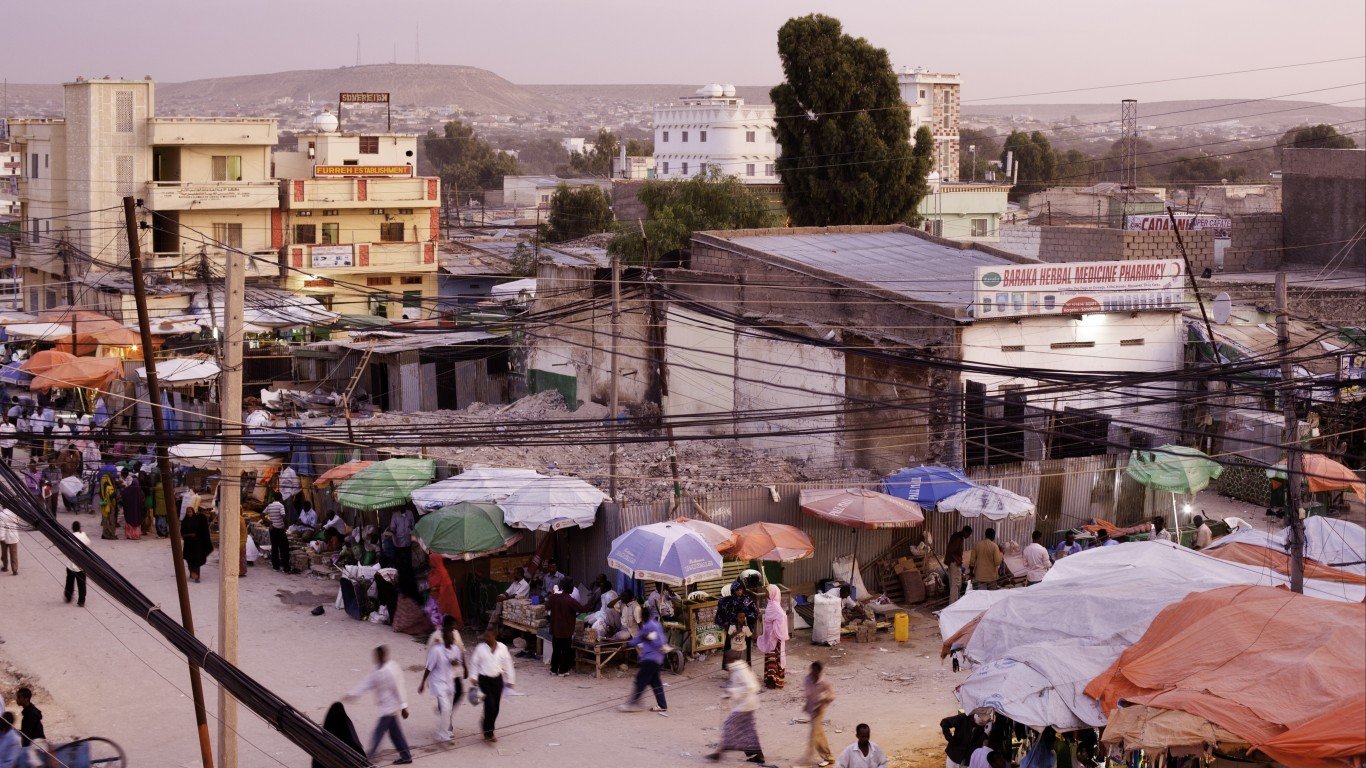
4. Somalia
> Est. trafficking victims: 15.5 per 1,000 residents
> Female life expectancy: 58.0 years
> Women in legislature: 24.3%
> Population: 14.7 million
Somalia moved up a notch in the Thomson Reuters ranking of most dangerous countries for women compared to seven years ago. The African nation, consumed by war for many years, ranks third in women access to health care and for culture and religion, meaning women can be subject to acid attacks, genital mutilation, stoning and other forms of abuse. Somalia ranks fifth in discrimination, meaning women are hindered in their ability to pursue a livelihood, own property, or get an education.
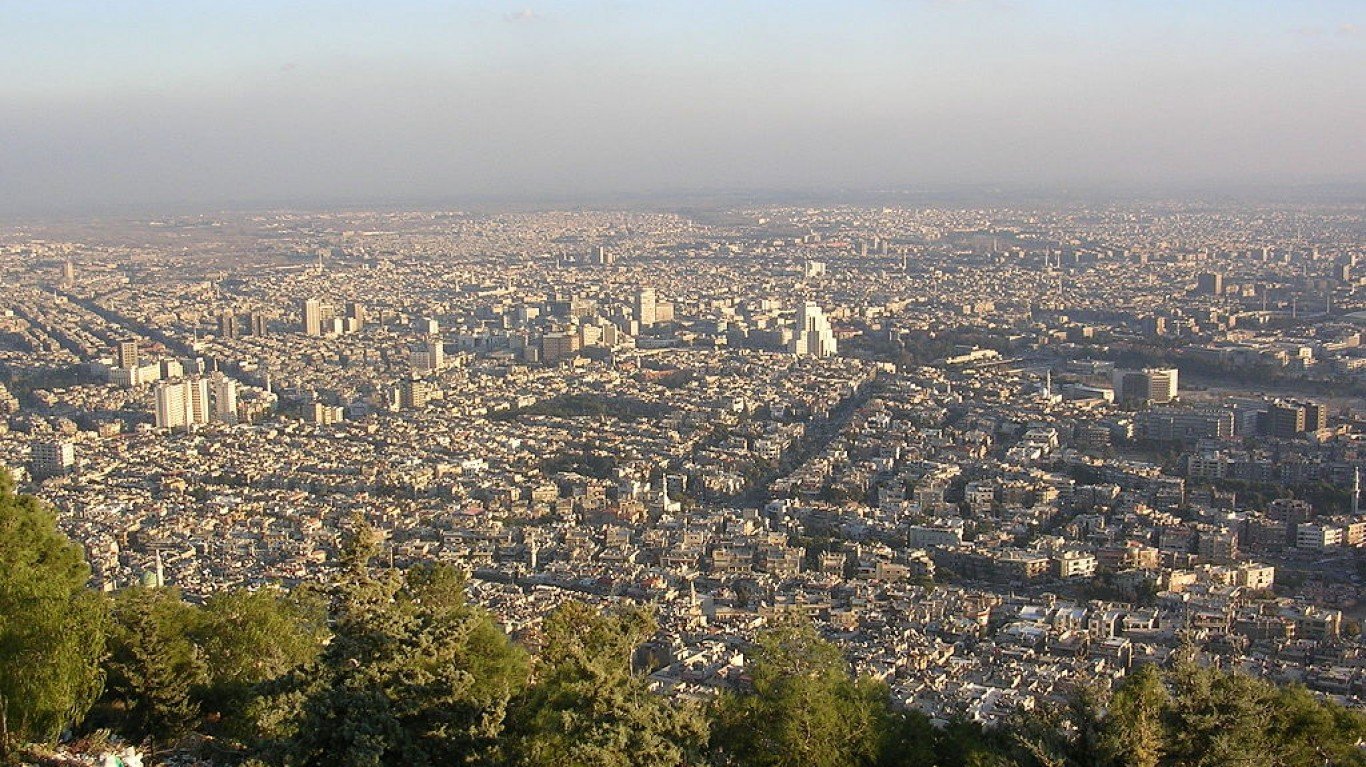
3. Syrian Arab Republic
> Est. trafficking victims: 7.3 per 1,000 residents
> Female life expectancy: 77.1 years
> Women in legislature: 13.2%
> Population: 18.3 million
In war-torn Syria, women are routinely subjected to violent acts that the UN classifies as war crimes and crimes against humanity by parties on both sides of the conflict. A UN Commission of Inquiry on Syria found that women are regularly unlawfully detained by government forces and other armed groups, where they are subject to rape and other forms of sexual violence. In regions controlled by the Islamic State, women are prohibited from traveling without the accompaniment of a male relative, they receive lashings for violating strict religious dress codes, and they have been stoned to death on charges of adultery. A panel of 548 experts found Syria to be the second worst country for women’s health care and non-sexual violence, and the third worst for sexual violence.
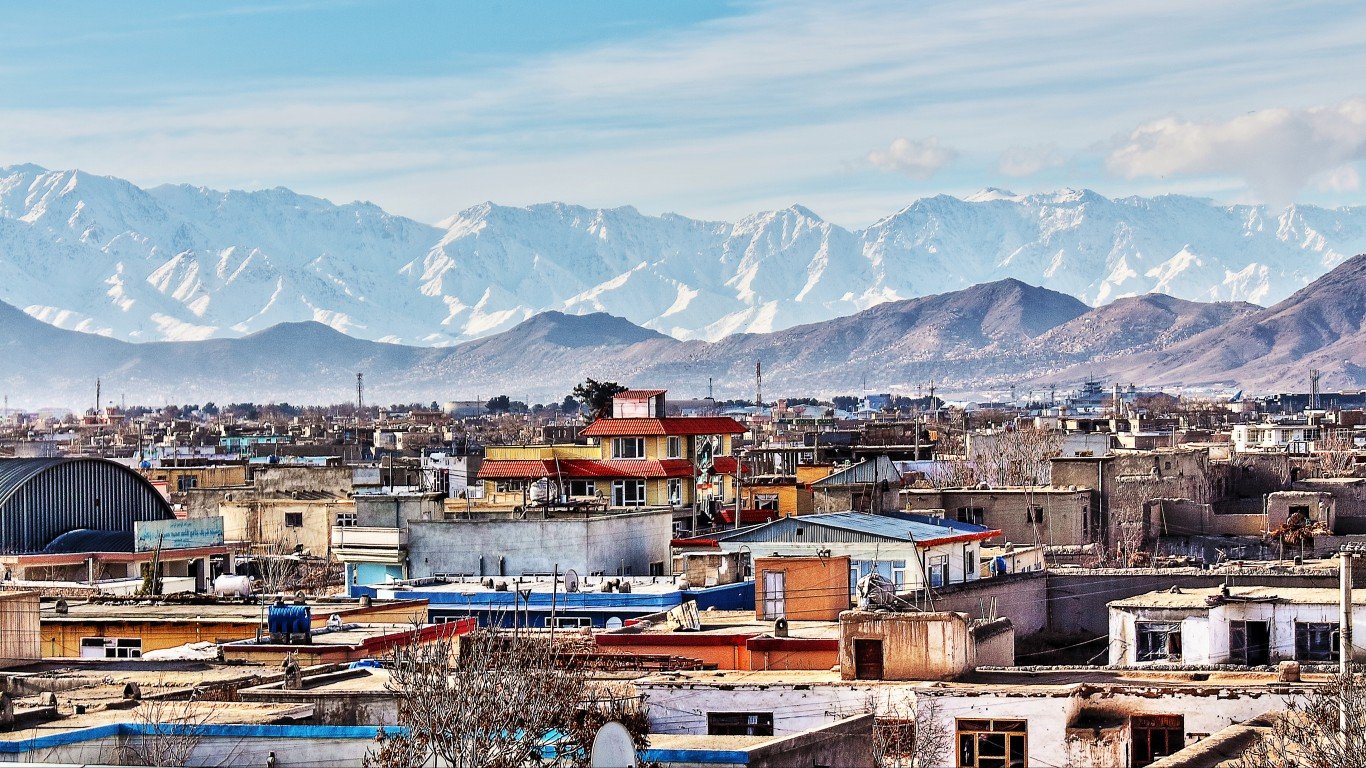
2. Afghanistan
> Est. trafficking victims: 22.2 per 1,000 residents
> Female life expectancy: 65.0 years
> Women in legislature: 27.4%
> Population: 35.5 million
Afghanistan, which ranked first in the Thomson Reuters Foundation poll as the most dangerous country for women seven years ago, slipped to second in the most recent ranking. Even though a U.S.-led coalition ousted the repressive Taliban regime almost 17 years ago, the country remains hostile to women. Afghanistan is rated as the most dangerous country for women in three criteria considered by Thomson Reuters: non-sexual violence such as domestic abuse, poor access to health care, and discrimination over jobs and land.
Afghanistan does not fare well on the United Nations Development Program Gender Inequality Index either and is ranked 169th out of 188 countries. The UN has cited Afghanistan for not punishing those who commit gender brutality and confine women to the home. According to the United Nations Development Program, only 19% of women over the age of 15 participate in the labor force, among the lowest participation rates in the world.
[in-text-ad-2]
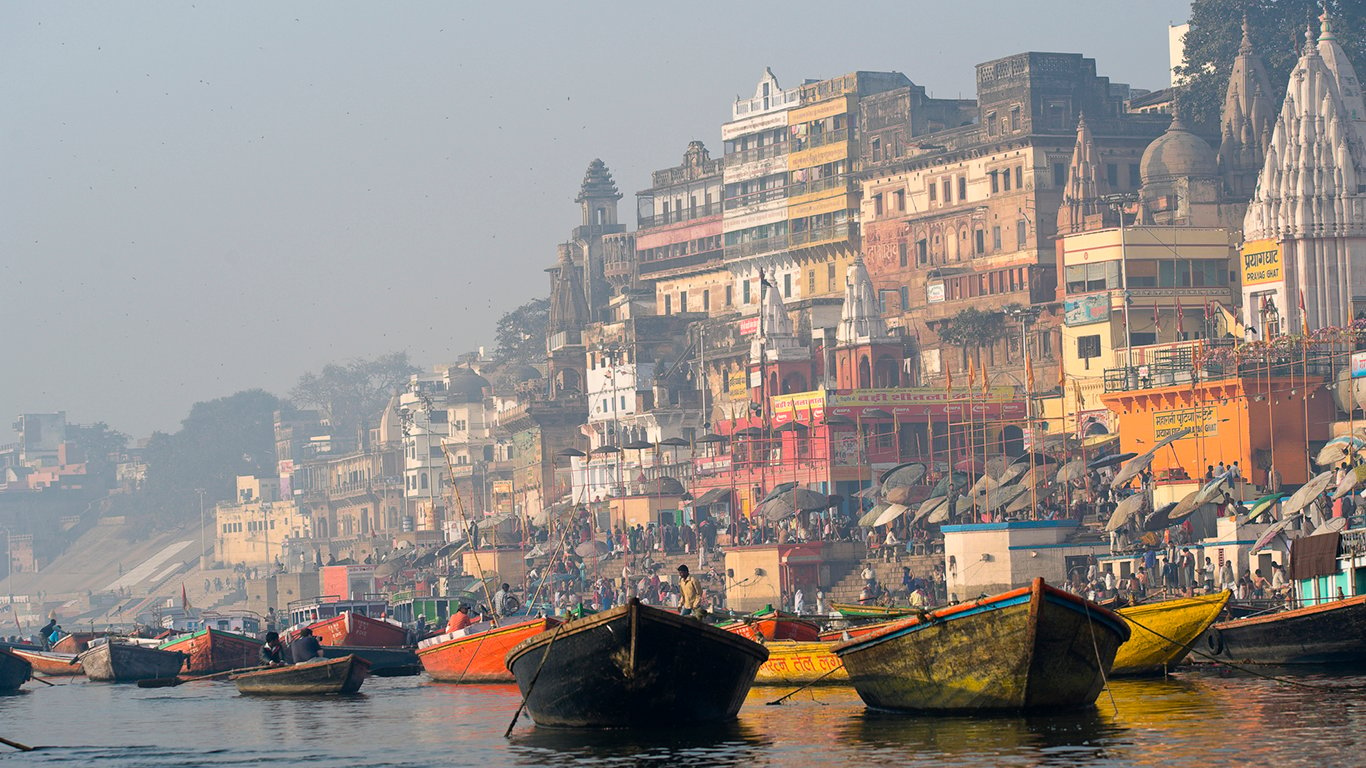
1. India
> Est. trafficking victims: 6.1 per 1,000 residents
> Female life expectancy: 70.2 years
> Women in legislature: 11.8%
> Population: 1.3 billion
According to a panel of 548 experts on women’s issues, India is the most dangerous country for women. It ranks as the worst of any United Nations member nation in three categories: cultural practices, sexual violence, and human trafficking. From 2001 to 2012, the number of rapes, kidnappings, and incidents of domestic abuse in India increased. The prevalence of violence against women in India made global headlines in 2012 after a woman in New Delhi was beaten and raped while traveling on a bus with her friend. Subsequent protests and widespread condemnation of the incident led to the establishment of a judicial committee, which found that the inefficacy of the Indian government in prosecuting sex offenders has contributed to the frequency of violence against women.
Detailed Findings
Despite the progress in some parts of the globe toward gender equality, the world largely remains a violent place for women. Estimates published by the World Health Organization indicate that about 35% of women worldwide have experienced either physical and/or sexual intimate partner violence or non-partner sexual violence during their lifetime. These violent encounters can have long-term psychological consequences for women, causing mental and physical problems, possibly leading to suicide. Sometimes, the violent abuser escalates to murdering his victim.
When Thomson Reuters last conducted the poll in 2011, Afghanistan topped the list as the most dangerous country in the world for women. The mountainous Asian nation made the list of the most dangerous countries for women this time, but it did not take the top ranking; that dubious distinction went to India.
Nations such as the Democratic Republic Of The Congo, South Sudan, Syria, and Somalia that have been destabilized by prolonged wars appear on the list as well. Saudi Arabia, Pakistan, and Afghanistan, where religious strictures have repressed women for hundreds of years, are also among the most dangerous countries for women.
A surprise entry on the list is the United States, the only Western nation to rank in the top 10. Thomson Reuters said the survey was taken after the #MeToo movement against sexual harassment shook the nation last year. After Hollywood movie titan Harvey Weinstein was accused of sexually harassing women for decades, hundreds of women went public about their experiences, recounting tales of influential men abusing their positions of power in media, politics, and entertainment.
The United States is tied with Syria as the third most dangerous country for women in terms of sexual violence. The U.S. also ranks sixth in terms of non-sexual violence, such as domestic physical and mental abuse.
Methodology
24/7 Wall St. reviewed the list of the most dangerous countries for women based on data compiled by Thomson Reuters Foundation. Thomson Reuters asked 548 experts on women’s issues to name the most dangerous countries from the 193 member states of the United Nations. The foundation then asked respondents to name the worst country in six categories: access to health care; discrimination or inability to make a livelihood; cultural, tribal, and religious traditions or customary practices that can include forced marriage, stoning, and female genital mutilation; sexual violence such as rape and sexual harassment; non-sexual violence such as domestic physical and mental abuse; and human trafficking such as domestic servitude and sexual slavery. Additional source material was obtained from the World Bank, the United Nations Development Program, and the World Health Organization.
Sponsored: Want to Retire Early? Here’s a Great First Step
Want retirement to come a few years earlier than you’d planned? Or are you ready to retire now, but want an extra set of eyes on your finances?
Now you can speak with up to 3 financial experts in your area for FREE. By simply clicking here you can begin to match with financial professionals who can help you build your plan to retire early. And the best part? The first conversation with them is free.
Click here to match with up to 3 financial pros who would be excited to help you make financial decisions.
Thank you for reading! Have some feedback for us?
Contact the 24/7 Wall St. editorial team.
 24/7 Wall St.
24/7 Wall St.
